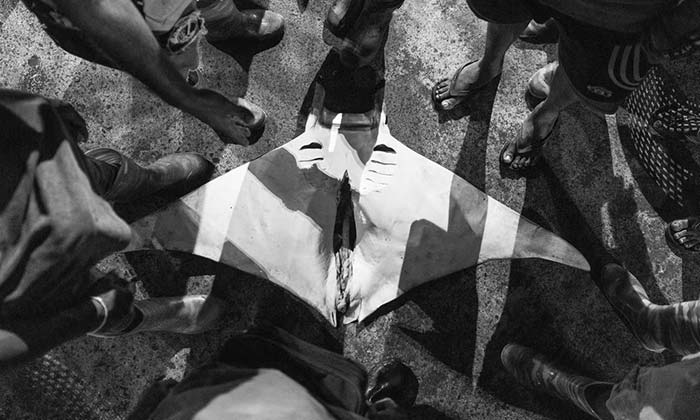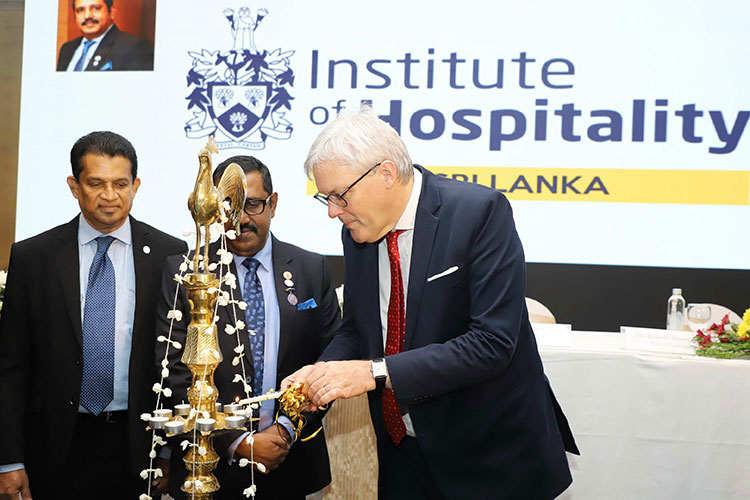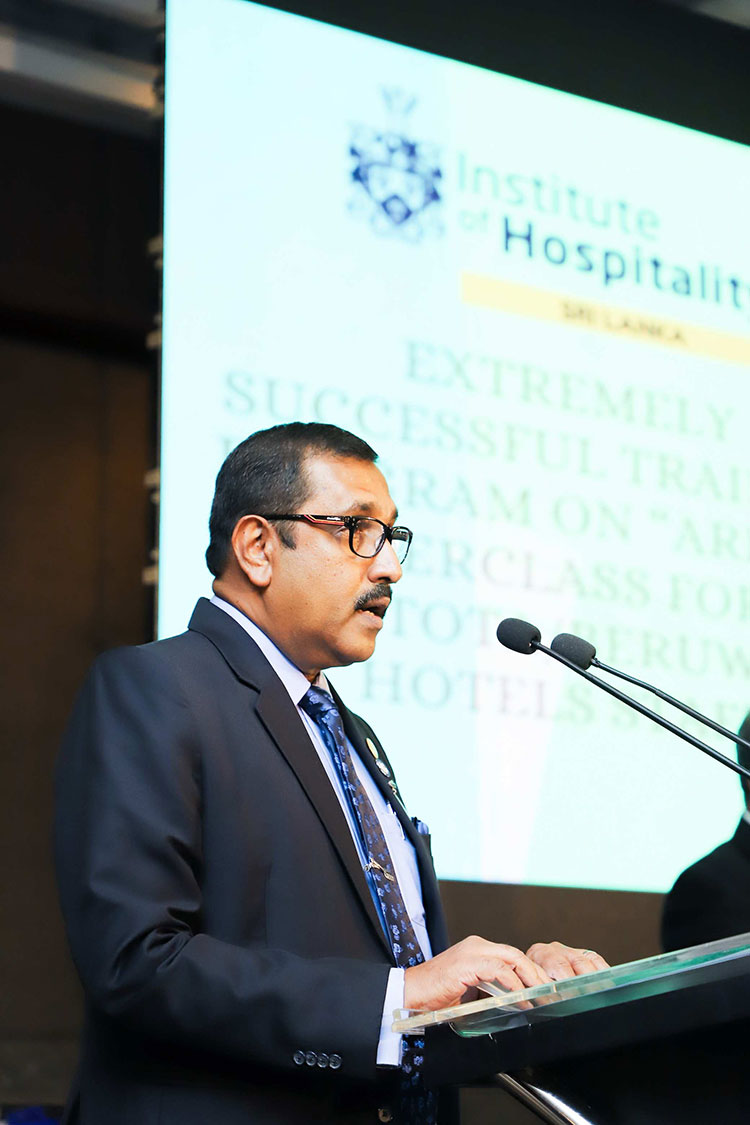Life style
‘Its not like chicken farming’: why manta rays are being chopped up in Sri Lanka
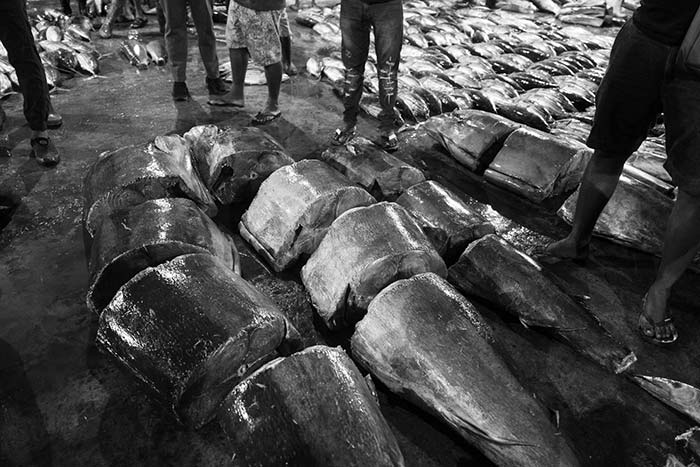
by Zinara Rathnayake
The gill plates of the extremely intelligent fish – many species of which are already categorized as endangered – are sold across east Asia as remedies said to have ‘no basis in medical science’
Every morning, starting at 3am, Lakshan hacks up manta rays. A wholesale buyer who plies his trade at Sri Lanka’s largest fish market, in the city of Negombo, just north of Colombo, he jostles with fishers offloading their catches. His business is primarily to find fresh tuna but he also buys 700kg (1,540lb) of manta and devil rays every day.
He doesn’t want the ray’s meat, which most Sri Lankans don’t eat. Instead, he’s after the gill plates: cartilage that helps manta and devil rays filter out microorganisms in ocean waters.
In a courtyard across from the market, Lakshan dries the gill plates on a corrugated iron board. Then he sells them to another trader for as much as $130 (#104) per kilo. It seems a high price, but Lakshan (who gave only his first name out of concern for his trade) needs 5kg of fresh gill plates for every kilo of dried ones. He has only a vague idea what happens to them afterwards. “We heard they sell it to the Chinese because they eat them,” he says.
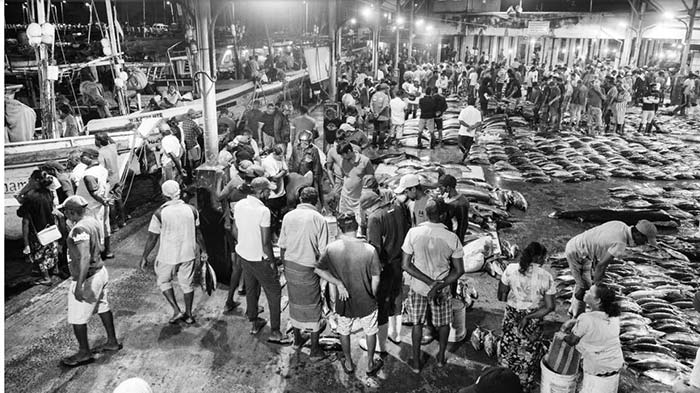
Buyers and sellers inspect the wares at the night market, where tuna and sailfish remain the most prized offerings
Dried gill plates are indeed often sold in medicine and dried seafood markets across east Asia, but are not used in traditional Chinese medicine. The growing demand for ray gill plates stems from market vendors using them to make soup that they tout a remedy for various health issues. The conservation charity Manta Trust calls these gill-plate concoctions “a pseudo-remedy” that has “no basis in medical science”.
The demand for gill plates has generated a sprawling cottage industry. Small-scale fisheries across Sri Lanka kill manta and devil rays (collectively known as mobulids), including endangered and vulnerable species, just to export their gill plates. A recent study showed that more mobulid rays are caught in Sri Lanka alone than the annual global catch across large industrial purse seine fisheries (huge operations that use curtain-like nets to scoop up marine life by the tonne). Their sizes are also declining, the study says.
Most mobulid species are classed as endangered, which means – according to the International Union for Conservation of Nature’s criteria – their populations has reduced by between 50% and 70% in the past decade. Meanwhile, the number of mobulids being caught continues to grow, with India, Indonesia and China the biggest culprits, feeding a thriving trade centred in Guangzhou, China, and Hong Kong.
Sri Lanka fishers don’t specifically target mobulids. Instead, the rays get entangled in gillnets used to catch yellowfin tuna, billfish and sailfish. Most Sri Lankans don’t eat them, though some add dried ray meat to curry; there’s little to no demand for the fresh meat.
This meant fishers used to release manta and devil rays back to the sea, but the lucrative gill plate trade has changed that. “Sometimes fishers used to cut off their heads and toss them out in the seas, because they thought that buyers wanted the meat,” says Daniel Fernando, the co-founder of the Blue Resources Trust, a non-profit marine research institution. “But traders didn’t want the meat. They wanted gill plates, which are in the head.”
The trade in plates provides much-needed additional income. Last year, Sri Lanka’s economy crashed, dragging many families into poverty. In its worst economic crisis since independence, the country ran out of basics such as food, cooking gas and fuel. Many people are still struggling to put meals on the table, and the World Food Program reported in February that 32% of households remained food-insecure. For fishery workers like Lakshan, gill plates bring much-needed income.
Manta rays are one of the most intelligent species of fish, with a brain up to 10 times larger than that of a whale shark and more highly developed areas for learning, problem solving and communicating. They are playful, curious and are thought to be able to recognize themselves in mirrors, a sign of self-awareness usually limited to the great apes, cetaceans and elephants.
Trading rays is not illegal, although in 2014 the Convention on International Trade in Endangered Species of Wild Fauna and Flora (CITIES) brought in stronger protection for manta rays, and the international trade in their meat, gills and fins is supposed to be accompanied by permits and certificates confirming that they have been harvested sustainably and legally.
However, the UN’s Bonn Convention stipulates that the animals should not be captured for commercial purposes. Sri Lanka is also signed up to the Indian Ocean Tuna Commission, which requires that its members not retain any mobulid catch.
Sri Lanka itself has no legal framework to protect manta and devil rays. It has stopped issuing export permits but there are no national protections, Fernando said. Periodically, customs agents will stop shipments of gill plates being illegally exported, but the trade is persistent: in 2020, authorities at Hong Kong airport seized 300kg of manta ray gill plates worth $116,000, coming from Sri Lanka.
As fishing boats proliferate across the Indian Ocean, mobulids are under pressure. They’re particularly vulnerable biologically to overfishing: they have slow reproduction cycles, with young female mantas taking 10-15 years to mature sexually, and giving birth to just one pup every two or three years. “Their population can collapse in a very short time,” Fernando says. “Things will appear to be fine for a few years, and then, suddenly, they can pretty much get wiped out.”
He emphasizes that the problem is not limited to Sri Lanka. “These rays don’t respect political boundaries – they go in and out of Sri Lankan waters. It’s a regional issue, if not global. Action of one country is not sufficient.”
The organization is calling for governments to join in declaring protected areas for rays and their habitats to reduce by-catch, and to educate fishers about safely releasing juveniles back into the ocean to improve their chance of survival.
Replacing the use of gillnets – vertical walls of netting used to trap fish – with properly managed sustainable fishing methods such as longlines (miles-long lines with baited hooks) would also help, but the transition could take a long time as gillnets are the main method used by small fisheries.
Rays don’t have that time, Fernando says: their stocks are falling fast. He acknowledges that locals rely on them for income but points out: “We are not putting fish in the ocean and harvesting them. It’s not like chicken farming.
“Ideally, we should’ve looked into protecting them about four decades ago, to ensure they are caught sustainably, but we’ve waited so long that they now face imminent collapse,” he says. “We are going to have to make some very difficult decisions.” (Guardian)
Life style
Camaraderie,reflection and achievements

Institute of Hospitality Sri Lanka
 The 32nd Annual General Meeting (AGM) of the UK-based Institute of Hospitality’s Sri Lanka Chapter was held recently at the Ramada Hotel Colombo,.The event provided an evening of camaraderie , reflection of the past and present achievements,setting new benchmarks for the future
The 32nd Annual General Meeting (AGM) of the UK-based Institute of Hospitality’s Sri Lanka Chapter was held recently at the Ramada Hotel Colombo,.The event provided an evening of camaraderie , reflection of the past and present achievements,setting new benchmarks for the future
The AGM had the presence of two distinguished guests, the Chief Guest Opposition Leader Sajith Premadasa, and the Guest of Honour British High Commissioner to Sri Lanka, Andrew Patrick. Their inspiring speeches were lauded by all hoteliers who were present at the occasion
A special thanks was extended to Robert Richardson, CEO of the Institute of Hospitality UK, along with his team, sponsors, committee members, and all attendees for making the event memorable.
Dr. Harsha Jayasingh, Past President of the Institute of Hospitality (UK) Sri Lanka Chapter, emphasised the Institute’s longstanding history and the strength of its Sri Lankan branch. “The Institute of Hospitality (IH) UK has a history of 86 years, and we are proud to be the Sri Lanka Branch. IH Sri Lanka is much stronger now with many members from all areas of the hospitality industry,” he stated.
Dr. Jayasingh highlighted the significant role of tourism in Sri Lanka’s economy,. He said tourism it is the third-largest source of revenue for the country. “Tourism accounts for about 13.3% of total foreign exchange earnings and employs 450,000 people directly and indirectly. The hospitality industry in this island of pearl holds tremendous potential for economic growth, job creations, and cultural exchange,” he added.
He also pointed out more women should be attracted to the industry and advocated for the use of technology in hospitality sector to attract the younger generation.
The newly appointed Chairman Ramesh Dassanayake spoke about the challenges faced by the industry, including the reluctance of youth to join the sector. . Dassanayake expressed concerns over the migration of staff between hotels and the overall ‘brain drain’ in the sector. ” We must maintain high standards in the hotel We must try to attract tourists to Sri Lanka, we must have with many facilities Hence, hotel schools and other professional institutions involved in skills development mustincrease their intakes,” he pointed out.
Chief Guest Sajith Premadasa emphasised the importance of eco tourism and said “We need to have an environmental policy related to tourism in place,” . .
The 32nd AGM of the Institute of Hospitality UK, Sri Lanka Chapter, was a testament to the strength and potential of Sri Lanka’s hospitality industry. The insights and commitments shared during the event set a new benchmark for the future.(ZC)
Pix by Thushara Attapathu
Life style
He recognizes human identity beyond boundaries of gender, race, nationality and religion.
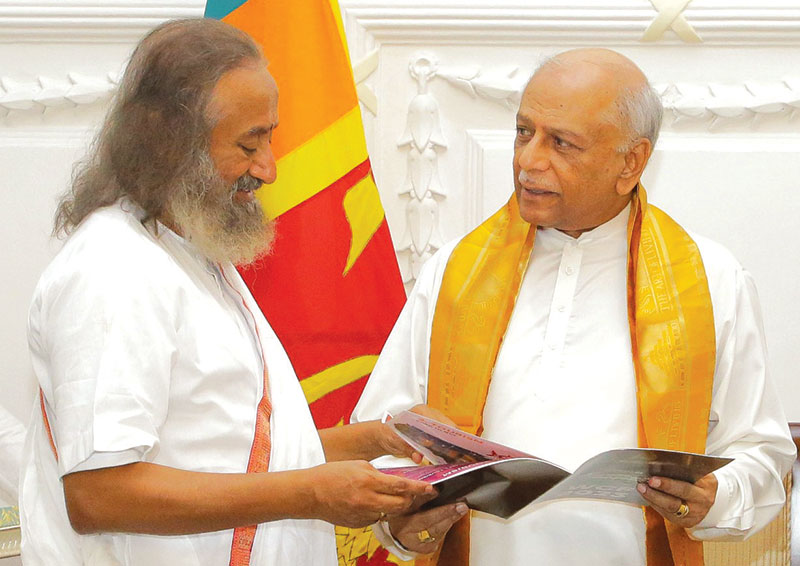
Visit of Sri Gurudev to Sri Lanka
Humanitarian, spiritual leader and Global Ambassador of Peace Gurudev Sri Sri Ravi Shankar (Sri Gurudev) was in Sri Lanka on a three day tour on the invitation of the Prime Minister of Sri Lanka Dinesh Gunewardene. Gurudev who inspired a wave of volunteerism and service to moot one of the largest volunteer-based organisations in the world – The Art of Living – visited the various projects under the aegis of the foundation and launched twelve vocational and technical centers around the island. He was accompanied by thousands of followers from Sri Lanka and around the world.
Gurudev who visited Sri Lanka for the sixth time also had a first day cover launched in honour of his visit. He is a strong proponent of spreading happiness, using the unique Sudarshan Kriya, yoga, meditation and practical wisdom to unite people, empower individuals and transform communities. His programmes provide techniques and tools to live a deeper, more joyous life, while his non-profit organisations recognize the human identity beyond the boundaries of gender, race, nationality and religion.
The Art of Living which has more than 30,000 teachers and over one million volunteers across 180 countries has touched in excess of five hundred million people around the world. CNN called it “Life Changing” and The Washington Post headlined it, “Fresh air to millions”.
In Trincomalee, Gurudev met with war victims and had a heartwarming engagement with the children from the children’s homes run by the Foundation. He also visited the Koneswara Temple in Trincomalee and graced the Kumbhabhishekam at Seetha ecogPnize the human identity beyond the boundaries of gender, race, nationality and religion. Amman temple at Nuwara Eliya. He held discussions with the trustees on the progress of the foundation’s social service projects, while also holding a special event – Ekamuthuwa – attended by a large number of dignitaries and his devotees from around the world.
His time with the Prime Minister was spent discussing the prospects of unity in diversity and uniting Sri Lanka by adding happiness into the formula of living. In addition he had discussions with the Speaker of the Parliament of Sri Lanka Mahinda Yapa Abeywardena, prominent business stewards and civil society leaders.
Life style
Bridal shows with opulence and luxury at The Epitome hotel in Kurunegala
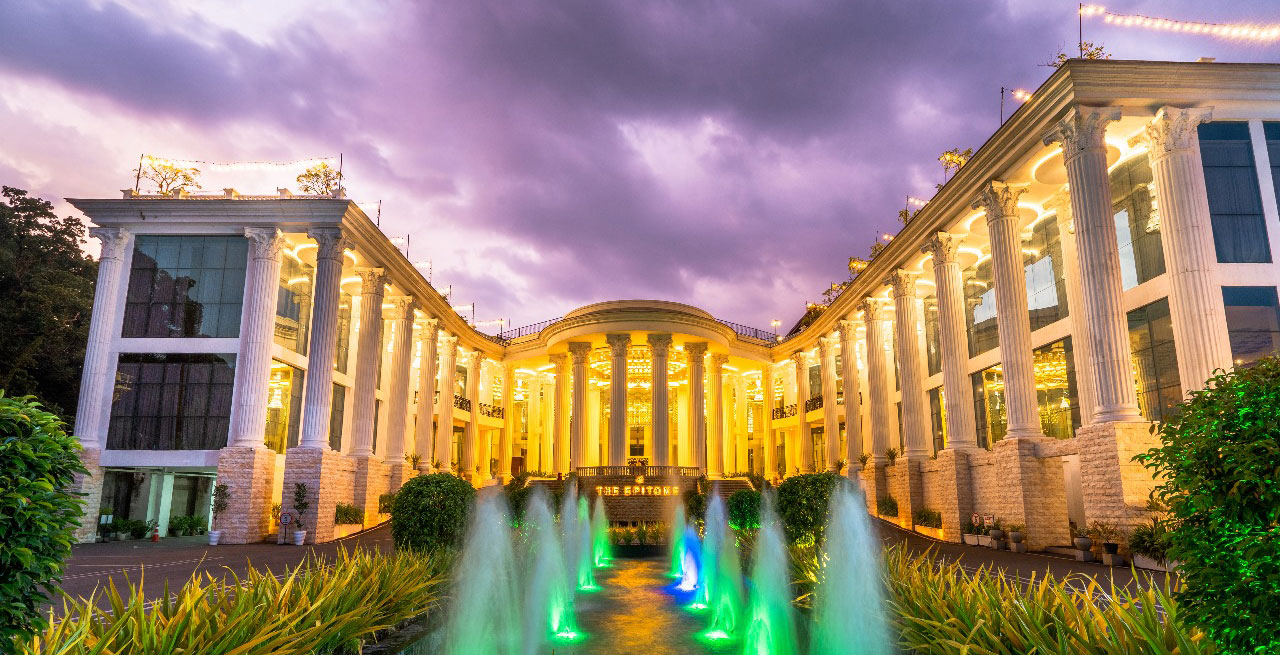
by Zanita Careem
Envison your dream wedding day come to life at the Epitome Hotel, a prestigious city hotel in Kurunegala offering an unrivalled luxury rendors experience for weddings.
The venue is designed to embody opulence and luxury from all quarters for a spectacular wedding in kurunegala,Thier ballroom is the largest banquet facility in Sri Lanka It can be divided into six luxurious pillarless wedding halls on the ground floor and 25pax smaller banquet halls.
It can be easily named as a five star heaven in the heart of the city contributing to a myriad of immense experiences tailored to inspire and delight wedding experiences.
From opulent décor set up to exquisite table decor, lavish food, every detail is meticulously curated to spark your imagination and ignite creativity for a perfect wedding. The previous prestigious wedding shows season one and season two attracted large crowds
were unique events which gave the wedding vendors and potential clients had an opportunity to connect and interact with each other. Beyond being a showcase it was a chance for the wedding vendors to unite and contribute to the vibrancy of the wedding industry. The wedding show covered all area of the bridal industry providing a comprehensive variety of bridal supplies from Sri lanka and became the most popular bridal exhibitions in Kurunegala.This bridal exhibitions allowed brides and grooms to experience first hand the products and services available from suppliers in Sri Lanka
These wedding shows held at The Epitome created a benchmark and gave an opportunity for vendors to create connections to the utmost satisfaction said Harshan Lakshita Executive Director. of the magnificent Hotel
Our wedding shows featured experts and professionals in every field‘ It covered all areas of the bridal industry provided a comprehensive variety of bridal supplies from Sri lanka and became most popular bridal exhibition in this region.We are always open to everyone to join us at our wedding shows in the future. It is an opportunity to discover the incredible talent within our local wedding and bridal vendors to make meaningful relationships and plan thier special day at our breathtaking hotel The Epitome said General Manager Kavinda Caldera
The Epitome Hotel’s bridal show which will be held end of June will buzz with great ideas,advice and inspiration for all those who plan thier dream wedding
…….
The Hotel Epitome’s Wedding Season 3 will marked excellence, celebration and inspiration for those in the wedding industry. The exhibition halls will resonate with ideas on exquisite bridal wear to decor, florists , photography etc and showshowcase the rich tapestry of talent within the local wedding industry. .

